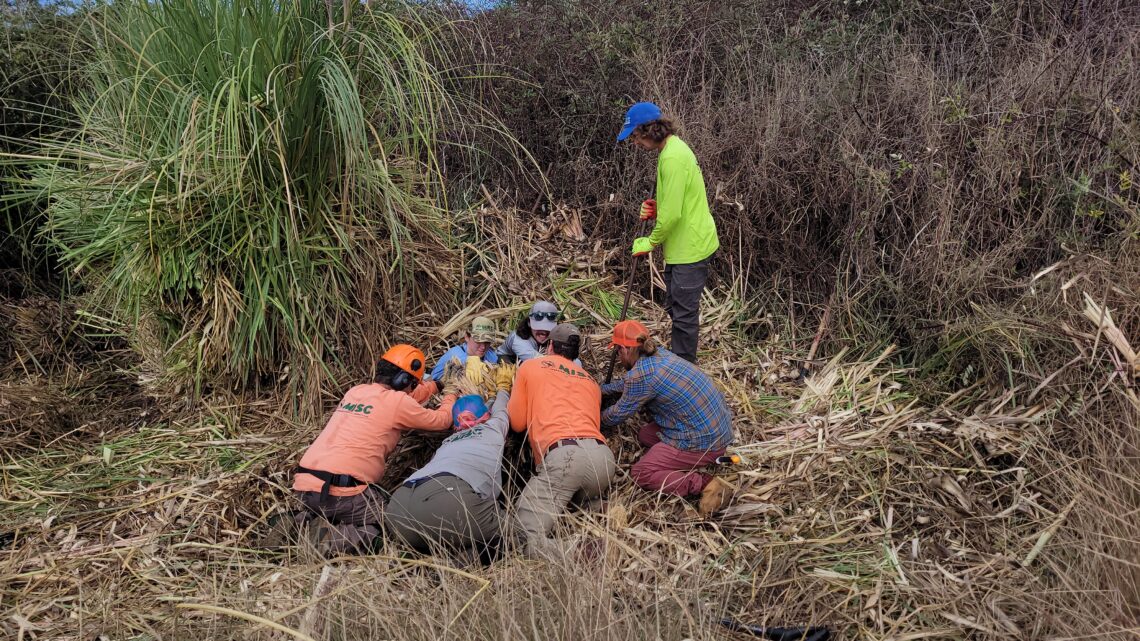
Invasive Plant Detection and Control
Program Goal: MISC’s plant program aims to contain or eradicate a priority subset of invasive plants that pose a threat to Maui’s watersheds, agriculture, and ecological resources.
Status: The invasive plant control team is species-led in our approach, working wherever target plants are found. The goal for each species varies from containment to eradication. The plant program’s efforts are directed towards miconia (Miconia calvescens), pampas grass (Cortaderia spp.) and ivy gourd (Coccinia grandis). While these species make up the bulk of the response effort, the prevention and early detection effort for plants like fountain grass (Cenchrus setaceus), mullein (Verbascum thapsus) , and devil weed (Chromolaena odorata), and others are critical. In total MISC priority pests affect 16,250 acres.
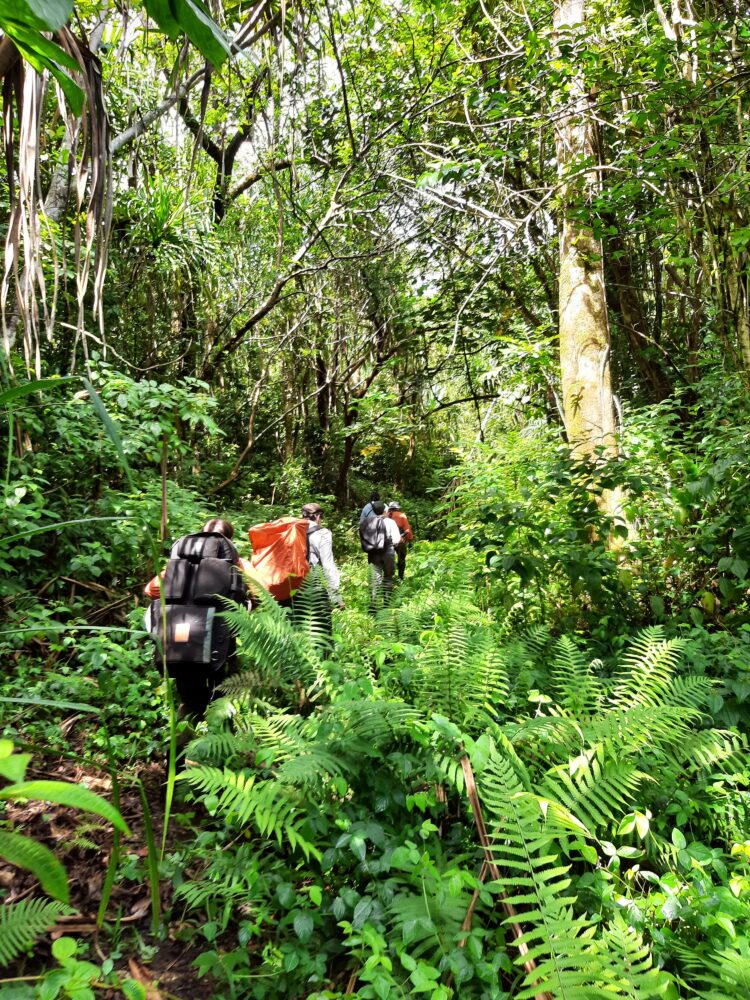
Target Species and Impacts:
MISC chooses target species based on the threat, feasibility of control, and resource availability. Our goal is to eradicate target species that are still limited in distribution. For widespread species like miconia, the strategy is to contain it and stop further spread until long-term solutions like biological control are developed. See below for a complete list of target and early-detection species.
Program History & Evolution
In 1991, resource managers on Maui came together to explore solutions to the newly recognized threat of miconia. The response led to the formation of the Melastome Action Committee. Committee members soon recognized that significant resources were needed to combat miconia and that miconia was not the sole invasive threat. In 1999, the Melastome Action Committee became the Maui Invasive Species Committee, which expanded to include animal, insect, and pathogen pests.
How We Respond
Strategy:
The strategy for each target species follows the same steps. First, the extent of the infestation must be determined by conducting surveys by ground and/or air. The next steps are removing plants, monitoring each site until the seedbank is exhausted, recording and analyzing data, and finally, adapting strategies to address any identified challenges. Eradication isnʻt declared until the seedbank has been exhausted; for some species thatʻs months, for others, decades.
Control:
Operations focus first on finding plants in and near known infested areas. Expanded surveys may be conducted if time and resources allow.
Ground Control
Small plants are pulled by hand unless the root stock is too thick. Larger plants may require treatment with an herbicide, which is typically applied to the stem or root of the target plant.
Aerial Control
MISC utilizes helicopters for aerial control. Aerial operations focus on locations that are too remote or difficult to access. Aerial control uses one of two options: delivering herbicide-encapsulated paintballs from a helicopter directly onto the stem of a plant and/or using a spray ball (a weighted nozzle) connected to an herbicide tank through a 60-foot cable. For either method, a staff “spotter” logs plant locations on a GPS tracker.

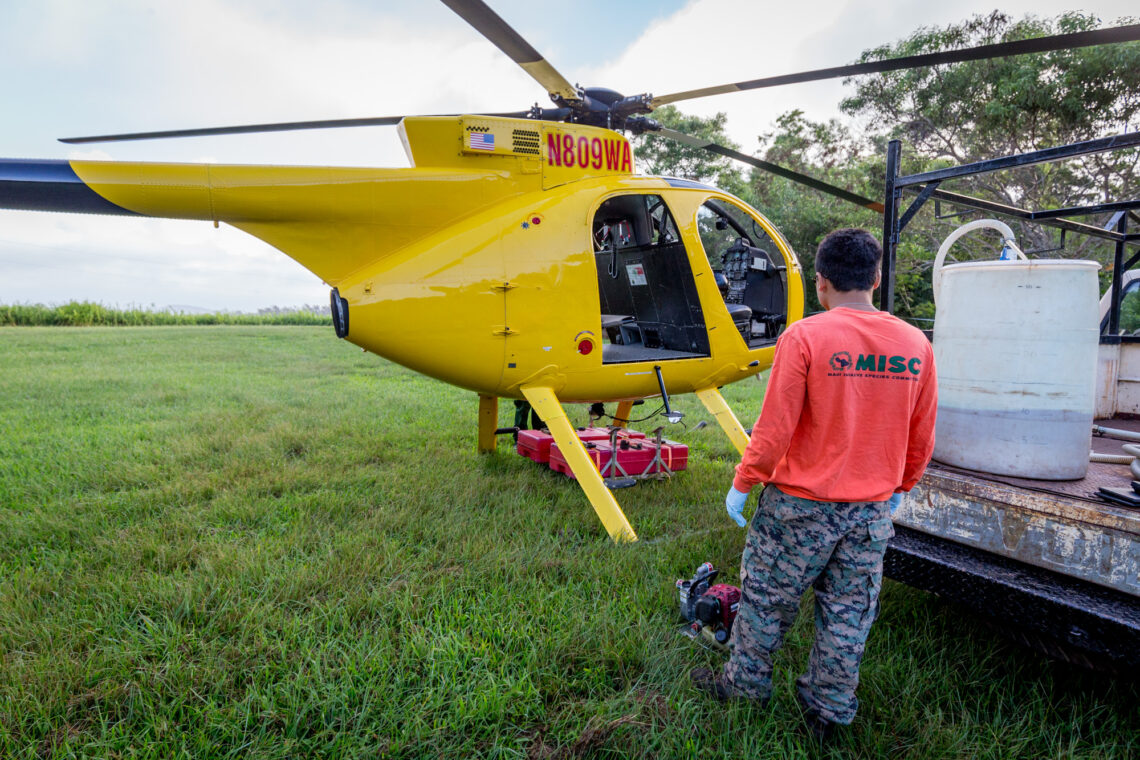
Non-Target Impacts
To prevent impacts on non-target species, MISC uses the least harmful and least amount of herbicide possible. We also follow strict decontamination protocols to prevent inadvertent seed dispersal.
Results & Progress:
MISC has been successful in preventing the establishment of plant pests across Maui through early detection and eradication. MISCʻs efforts have prevented fountain grass, mullein, blessed milk thistle, osage orange, rubber vine, barbados gooseberry and others from becoming established. Miconia is contained to East Maui and pampas grass is nearly gone from Upcountry.
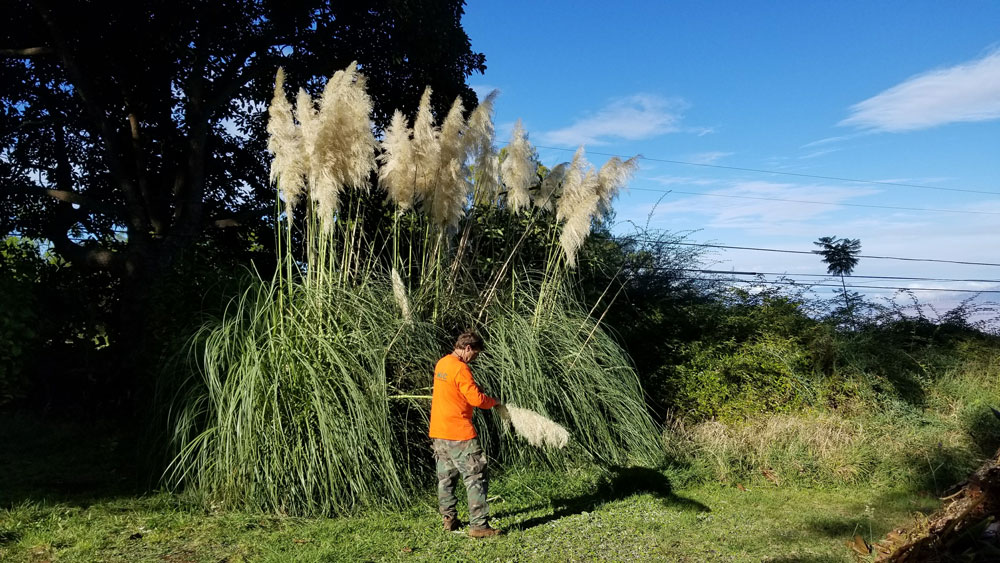
Current Target Species
*Denotes Hawai‘i State Noxious Weed

Miconia*
Impacts:
Forms thick stands that create “umbrellas” over forests. Shallow roots that promote erosion. Spreads easily, a major threat to watersheds.
Control:
MISC team working to control populations in East Maui, from Kipahulu to Huelo. Not yet established in West Maui. Report immediately if seen west of Honomanu.
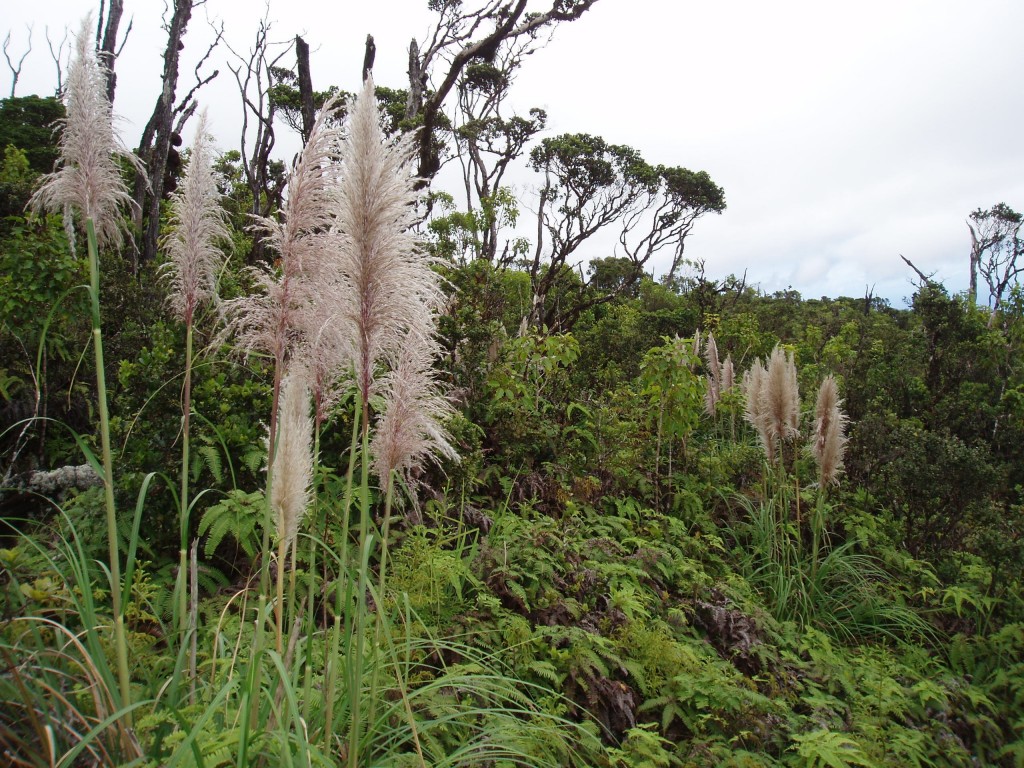
Pampas Grass*
Impacts:
Large clumping grass that outcompetes native plants. Major fire hazard. Seeds are spread long distances by wind.
Control:
Established in West Maui Mountains and some population on residential properties and near Haleakala National Park. MISC is working to control or eradicate.
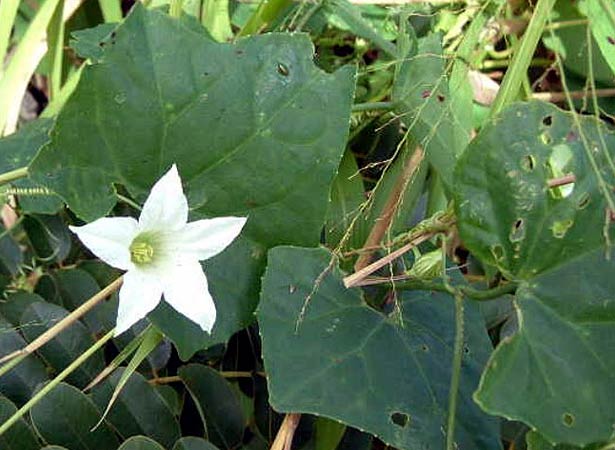
Ivy Gourd*
Impacts:
Vines smother vegetation, forests, fences, and power lines. Difficult to control because plants regrow from deep roots.
Control:
Localized infestations in Kapalua, Kihei, and Lahaina. Isolated plants have been seen in Makawao, Waiehu, and Kahului. MISC is working to control or eradicate.

Rubber Vine
Impacts:
Grows over and smothers other vegetation. Highly poisonous to humans and animals. When the vine is dry, a powdery dust emerges and can cause violent coughing, swelling of the nose, and blistering of the eyelids.
Control:
MISC is controlling a few isolated sites across Maui. Unfortunately, rubber vine is widely available to the public through internet seed companies, few of which describe the plants invasive qualities. Please report any plants found.
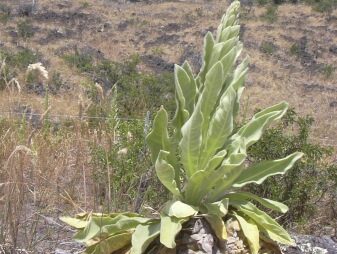
Mullein*
Impacts:
Quickly colonizes disturbed areas and out-competes native vegetation. Produces numerous seeds that may remain dormant for over 100 years. Drought-tolerant and able to withstand cold.
Control:
First discovered in 1986 at over 9,000’ on Haleakala. It has since been found cultivated at several locations in Kula. All known locations are under active control and surveillance.

Fountain Grass*
Impacts:
Grows quickly and outcompetes other plants for resources like water and space. Degrades quality of pastures and changes the structure of dry forest from bushes and trees to grass savannah. Fire-adapted and fire promoting.
Control:
Known fountain grass populations are limited to Waiehu and Kahului. MISC is working to control or eradicate.
Early Detection Rapid Response Species
These plants are not known to be present on Maui. Report immediately to 643PEST.org if seen anywhere on Maui.
Coming soon!
